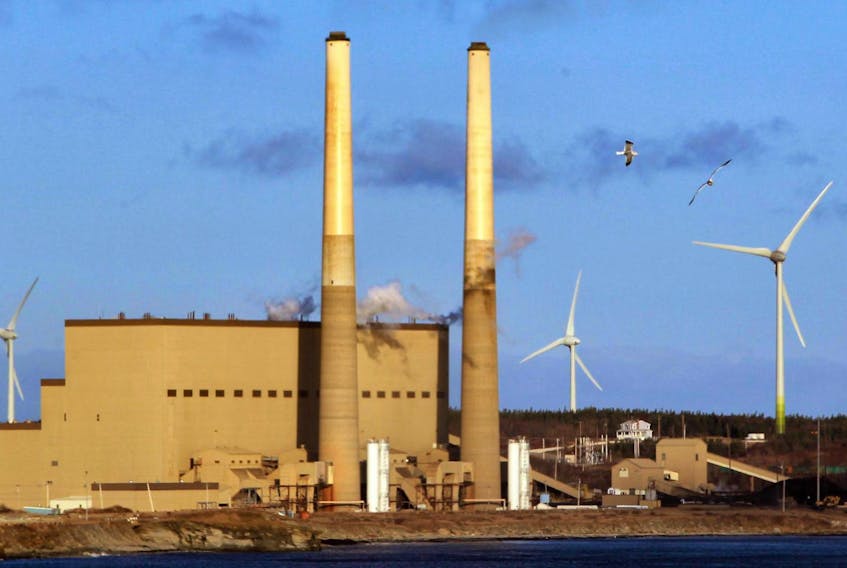A newly proposed equivalency agreement between the provincial and federal governments could see Nova Scotia continuing to burn coal past 2040.
The Halifax-based Ecology Action Centre is warning that the long-term projections of the proposed equivalency agreement signal that Nova Scotia could still be emitting millions of tonnes of greenhouse gases from coal more than a decade past the 2030 deadline.
“It’s just fine for Nova Scotia to take a little longer to phase out coal but taking past 2030 and continuing to emit millions of tonnes of carbon from coal in the 2040 decade is just way too late,” said Stephen Thomas, the centre’s energy campaign co-ordinator.
Back in 2014 the province and the federal government signed an equivalency agreement on emissions from coal-fired electricity generation. This was because the federal government at the time passed a regulation that would require coal plants to shut at the end of their economic life.
RELATED:
JIM VIBERT: The difficult questions raised as we adapt to climate change
Exploring the impact of climate change on Atlantic Canada's economy
Nova Scotia heavily relies on coal to generate the majority of its energy — currently, about 55 per cent the province’s annual electricity generation comes from Nova Scotia Power-owned coal plants — while almost 30 per cent of Nova Scotia’s electricity is supplied by renewable energy sources.
In 2007, only nine per cent of Nova Scotia’s electricity was renewable, and 80 per cent of that electricity was created by burning coal.
“In 2014 we had already a few measures to reduce carbon emissions from the electricity sector including ... caps on greenhouse gas emissions, renewable energy targets, energy efficiency, and the Maritime Link investment was finalized around that time as well,” Jason Hollett, Nova Scotia Environment’s executive director of climate change told SaltWire.
That initial equivalency agreement between Nova Scotia and the Harper government covered the period of 2015 to 2030 and allowed for Nova Scotia to continue to use coal in its energy generation mix beyond what would have been permitted federally. Hollett said this was because the province was able to prove it could reduce its greenhouse gas emissions by an amount that is equivalent to or greater than what would be achieved under the federal government’s regulations.
But because the Canadian Environmental Protection Act limits the applicability of equivalency agreements to five-year chunks, the first part of that agreement is set to expire at the end of 2019.

Feds committed to cutting coal
In 2016, at the same time as it announced a pan-Canadian approach to climate change, which included a nationwide carbon pricing framework, the Liberal government made a further commitment to phase out coal entirely by 2030.
As part of signing on to that plan, Nova Scotia and Ottawa came to an agreement-in-principle with the province to negotiate a renewed agreement on coal. At the end of March, the next five-year chunk of that equivalency agreement was published.
While the terms and figures have been updated to reflect what’s happened over the last five years Hollett said the new agreement is mostly to ensure the existing agreement doesn’t expire at the end of December.
“It was important that the agreement was renewed to keep that consistent regulatory approach in place,” Hollett said.
But Thomas said that there have been no updates to Nova Scotia’s plan to phase out coal since before this equivalency process was announced more than two years ago is cause for concern and shows a lack of ambition on the part of the province.
“There’s no new emission reduction from this plan,” he said.
Coal emissions tied to Nova Scotians' health
In addition, final regulations on emissions reductions from the electricity sector published by the federal government in the Canadian Gazette in November showed that phasing out coal electricity in Nova Scotia by 2030 would avoid 89 premature deaths, 8,000 asthma episodes and 58,000 days of breathing difficulty for Nova Scotians.
Thomas said by focusing on building more renewable energy into the province’s power grid, there’s every opportunity for Nova Scotia to phase out coal soon after the 2030 deadline while creating jobs in the green energy sector.
“There’s no reason why Nova Scotia has to continue burning coal into the 2040 decade as this plan puts out,” he said.
But according to Hollett, phasing out coal entirely by 2030 would require building new natural gas-fired plants to replace those 2,200 megawatts of generating capacity from coal. Hollett said switching to natural gas would reduce emissions in the short term but drive the province’s high energy rates even higher, and would just lock Nova Scotia into another fossil fuel for the long term.
“What we’re trying to do is to use those coal plants to increase the amount of renewables that are online ... so that hopefully allows us to avoid a large investment in natural gas,” he said
Hollett said in recent years the province has built 600 megawatts of wind, has invested $1.6 billion in the Maritime Link in order to have access to a massive amount of hydroelectricity via Muskrat Falls after 2020, and spent tens of millions of dollars on energy efficiency — efforts that he said will continue.
“Natural gas will probably play a role in the future of electricity generation in the province but we don’t want to jump wholesale from coal into natural gas because that actually crowds out the opportunity from some of the other cleaner sources,” Hollett said.
The proposed equivalency agreement is open for feedback until May 29. Individuals or groups can provide comment in writing to the federal government via mail or email.
RELATED:









